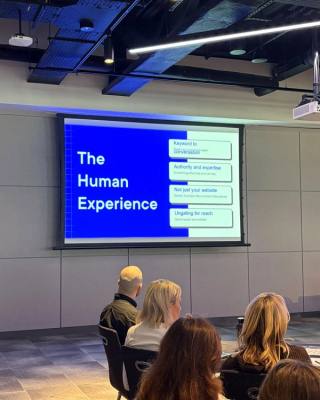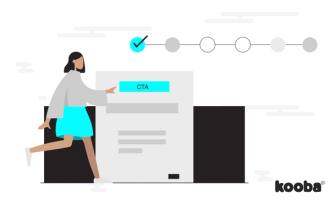At Kooba we’re great believers in the “jobs to be done” view of the world. I’m not saying we fall asleep listening to Clayton Christensen lectures on Youtube every night, but it’s certainly been known to happen in the past.
All our projects typically begin with asking what the ‘job’ of any particular project is, and indeed as a lens through which to view any piece of work ‘jobs to be done’ can be applied in a variety of contexts. What job does this site do? What job is a visitor hoping to get done? What job is this specific illustration doing? Asking these questions - and getting accurate answers - means any project is more likely to deliver the business results you want.
“It can be very, very easy to build on false assumptions about what we are trying to achieve and the results are usually disastrous”
But the second half of that equation - getting accurate answers - isn’t necessarily as simple as it sounds. It can be very, very easy to build on false assumptions about what we are trying to achieve and the results are usually disastrous. Building something beautiful and functional is nevertheless a waste of time and money if those qualities are being brought to bear on the wrong problem.
Breaking it down
So what is the key to understanding what job is being done? Well, as is often the case there are multiple ways to answer this question. At Kooba, we would always advocate a multi-disciplinary approach, so it’s only right to talk to stakeholders and customers, and be informed by expert opinion.
But there’s one great way to crystalise your thinking around what job any digital asset is doing, and that is by asking how you will measure success.
“What metric will I use to establish whether this particular piece of work is doing its job?”
If you can answer that question then you know what the job is and - by extension - you’ll suddenly find that making and evaluating decisions around content and design is an awful lot easier.
Insisting on a metric by which any activity is measured is usually good practice. Firstly, it helps reduce the influence of more subjective factors when determining what is and isn’t good work. And in the battle between “I don’t like it” and “this page has increased lead generation by 27%” the latter should always win.
Second, it forces us to make tough decisions, ones that in turn give focus to the design process. To continue with the landing page example, if we decide that the key metric by which we will measure success is ‘percentage of online demos viewed’ after visiting the page, we will work hard to ensure that this is what happens.
In other words, we will remove unnecessary distractions and options, ensure that content talks to the benefits of viewing a demo, and optimise the page to drive demo views. And whenever we make any change, we can see immediately whether it ‘worked’ or not by establishing how our metric changed.
Choosing the right metrics
At this point in time you might be thinking that this all sounds well and good, but isn’t ‘demos viewed’ a very narrow way to measure success? Would it not also be beneficial to include other interactions such as the completion of a contact form?
Those are fair questions, and they highlight the importance of choosing the right metrics. Take the time to understand what success looks like in broad terms, and get buy in from all stakeholders. Most importantly, always ask yourself the central question:
“Am I sure that in all cases where this metric is improved, this has a clear benefit to my business, and am I also satisfied that this metric cannot be ‘gamed’ in a way that would in fact be a negative in terms of the business?”
If you can’t answer ‘yes’ to that question, you have the wrong metric - and all the work you do to optimise around this number will be wasted.
“Take the time to understand what success looks like in broad terms, and get buy in from all stakeholders”
When you can answer ‘yes’, and you are confident that the metric you have chosen is both specific and yet not so specific as to be potentially damaging, you are ready to start designing and developing in a focused manner that will make a real difference not just to that one number, but to all the others up the chain. Your asset will be ‘doing its job’.
Apply metrics everywhere, and consistently
Last, but certainly not least - be granular when considering metrics. Individual pages, forms, emails, landing pages: each of these can have a specific metric through which you will measure success.
Note the word ‘can’. They don’t have to, so don’t get bogged down attempting to attach a metric to everything, but if it feels relevant by all means have multiple metrics in play for the various elements of your digital presence.
Do make sure, however, that these metrics don’t fight with each other. Metrics should always ‘roll up’. If your site has a particular ‘job’, make sure that any jobs below this actually support that aim. In theory if every metric at a local level is performing well, top level metrics should look after themselves. If that isn’t happening, take a look and re-align.










